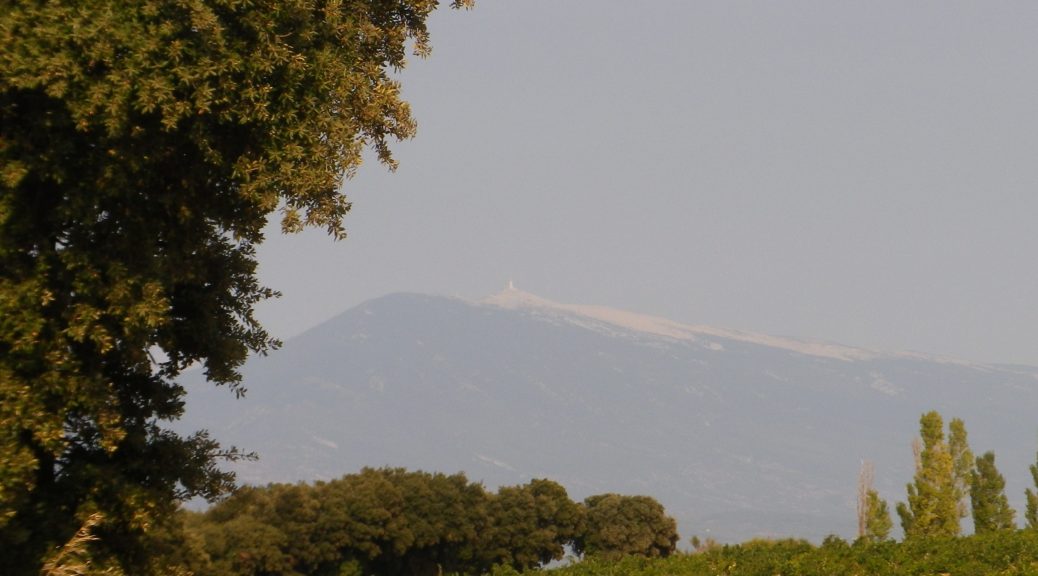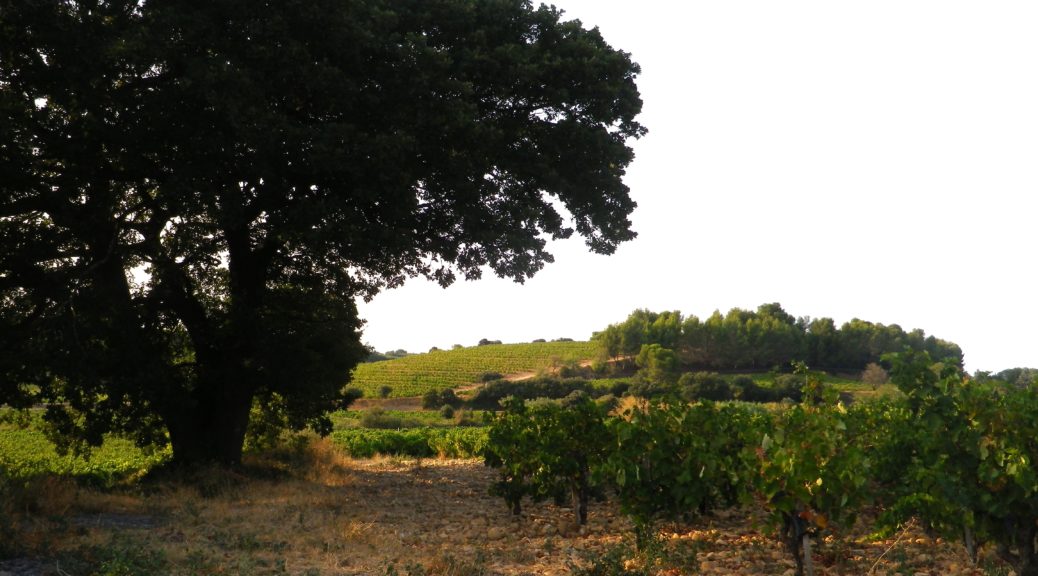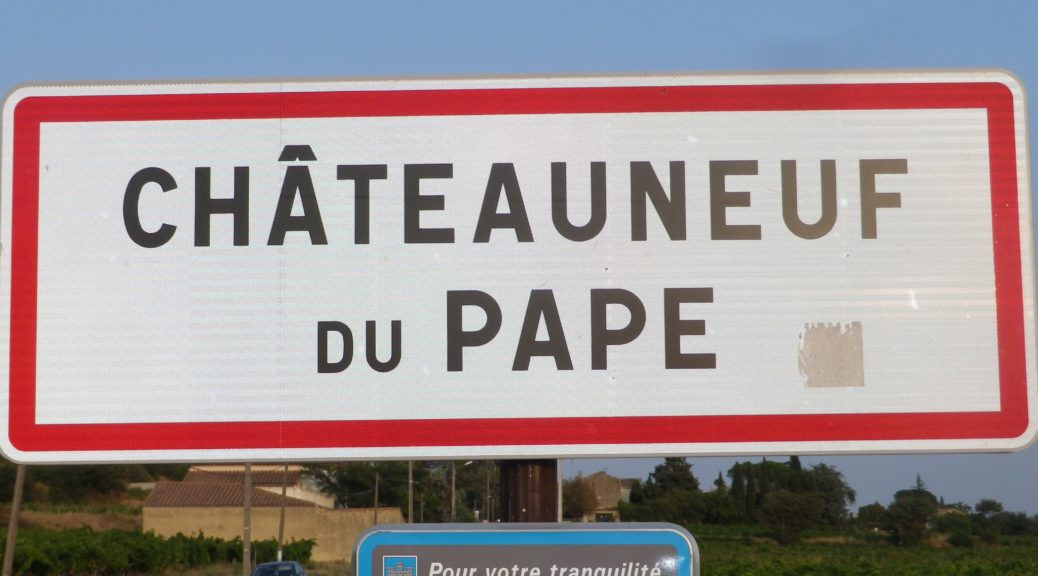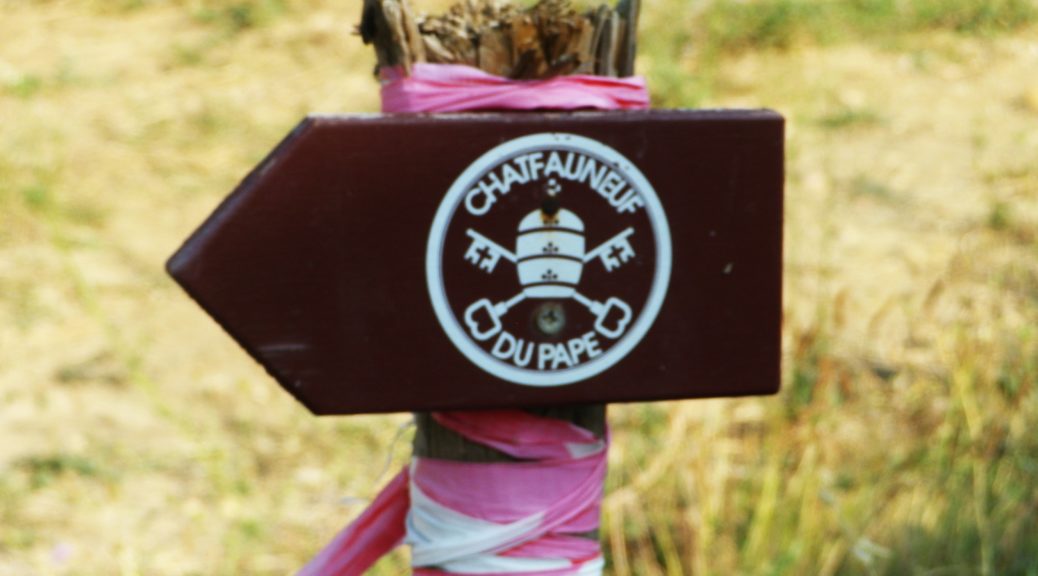Monthly Archives: October 2023
A New Castle Makes New Wine From Old
In the early 14th century, a Pope decided to make a new residence (his Chateauneuf, or New Castle) in the countryside a few miles north of Avignon. The intent was to use this as a summer residence, away from the noise and heat of Avignon. Vines have been in this area, around what is now the village of Chateauneuf du Pape, for at least a couple of millennia. The wine it produced, though, was not particularly good. But with papal money and interest, the wine improved greatly over time. Nowadays, Chateauneuf du Pape wine is one of the most iconic wines of the world.
So, with great enthusiasm, I headed to the village to hike an easy trail through its vineyards, try its wines, and see its “New Castle”.
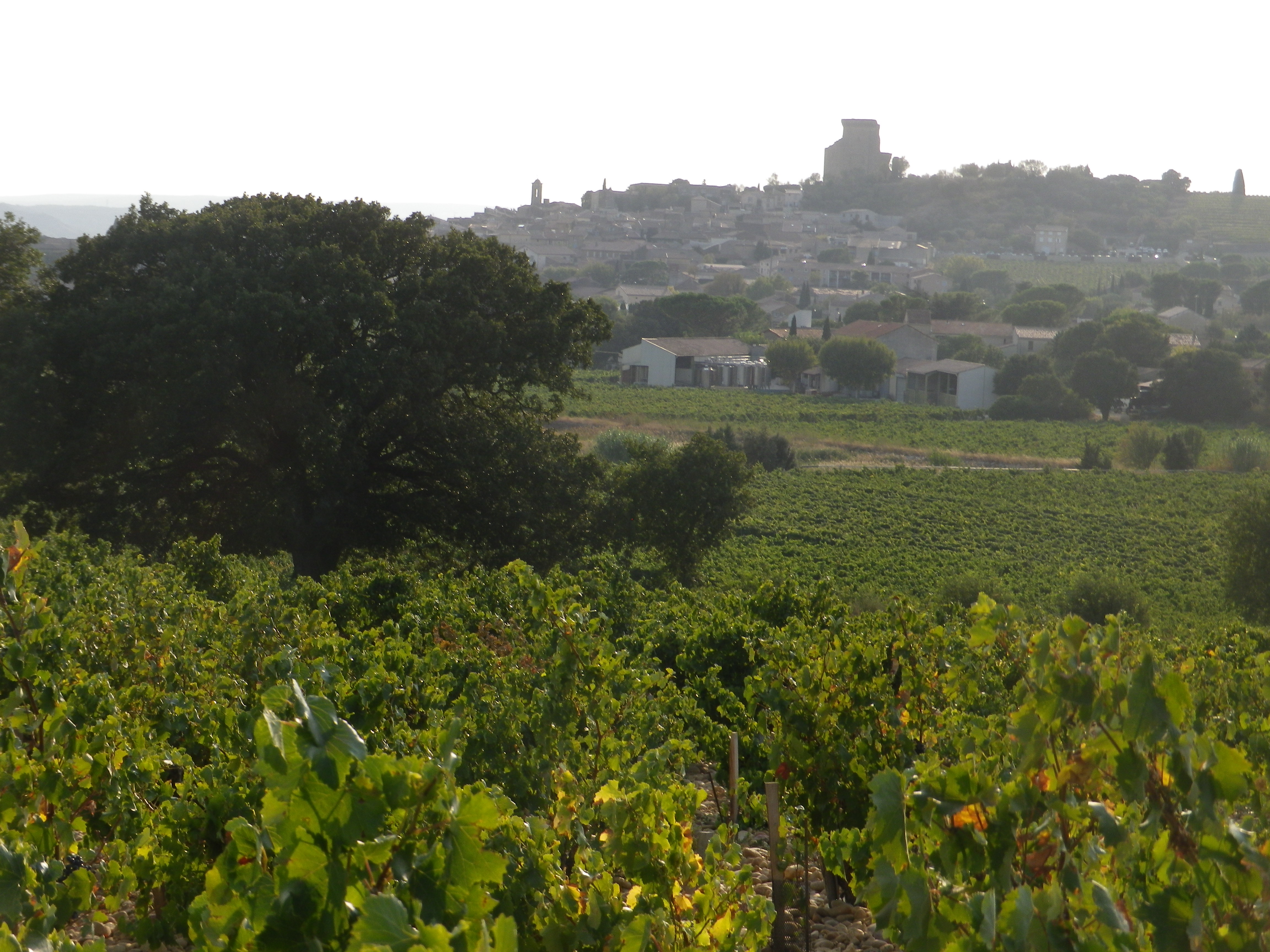
To be honest – the vineyards make the trip worthwhile here. They surround the village completely. This trail passed through the vineyards to the east of the village. My first surprise was seeing the galets. I had heard of them, of course. These stones both help keep weeds down, and help retain the sun’s heat (from day into night). But seeing them on the ground, and appreciating their size and texture, was another thing altogether. In one place, they were several deep on the ground, looking like so many harvested Russet potatoes, still lying in the field. (Caution: It makes for slow(er) walking.) Later, I came to a cut in a bank, and the layers were visible in the soil for at least a couple of feet!
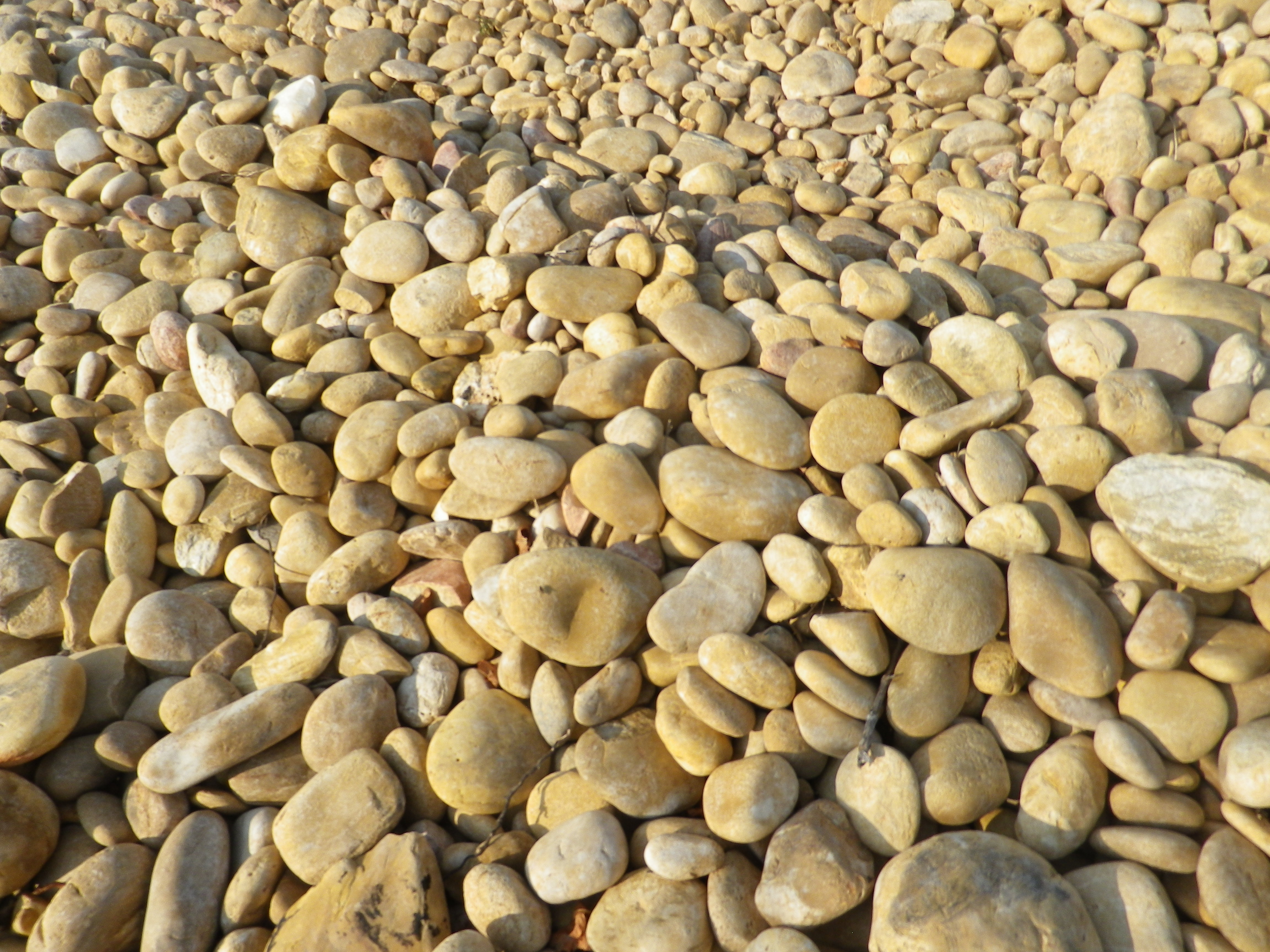
Another thing to notice along this trail, is the number of different vine pruning/training techniques. Usually you will see one, maybe two, types of pruning. But here, they even had the Gobelet (vines shaped like a goblet), in addition to the Guyot and the Cordon de Royat. This and other interesting tidbits of information about the terroir and the viticultural practices here may be found on education boards all along the trail. (While the trail’s boards are only in French, a brochure from the tourism office (https://en.chateauneuf.com/le-sentier-viticole) provides explanations for each board in French and English.)
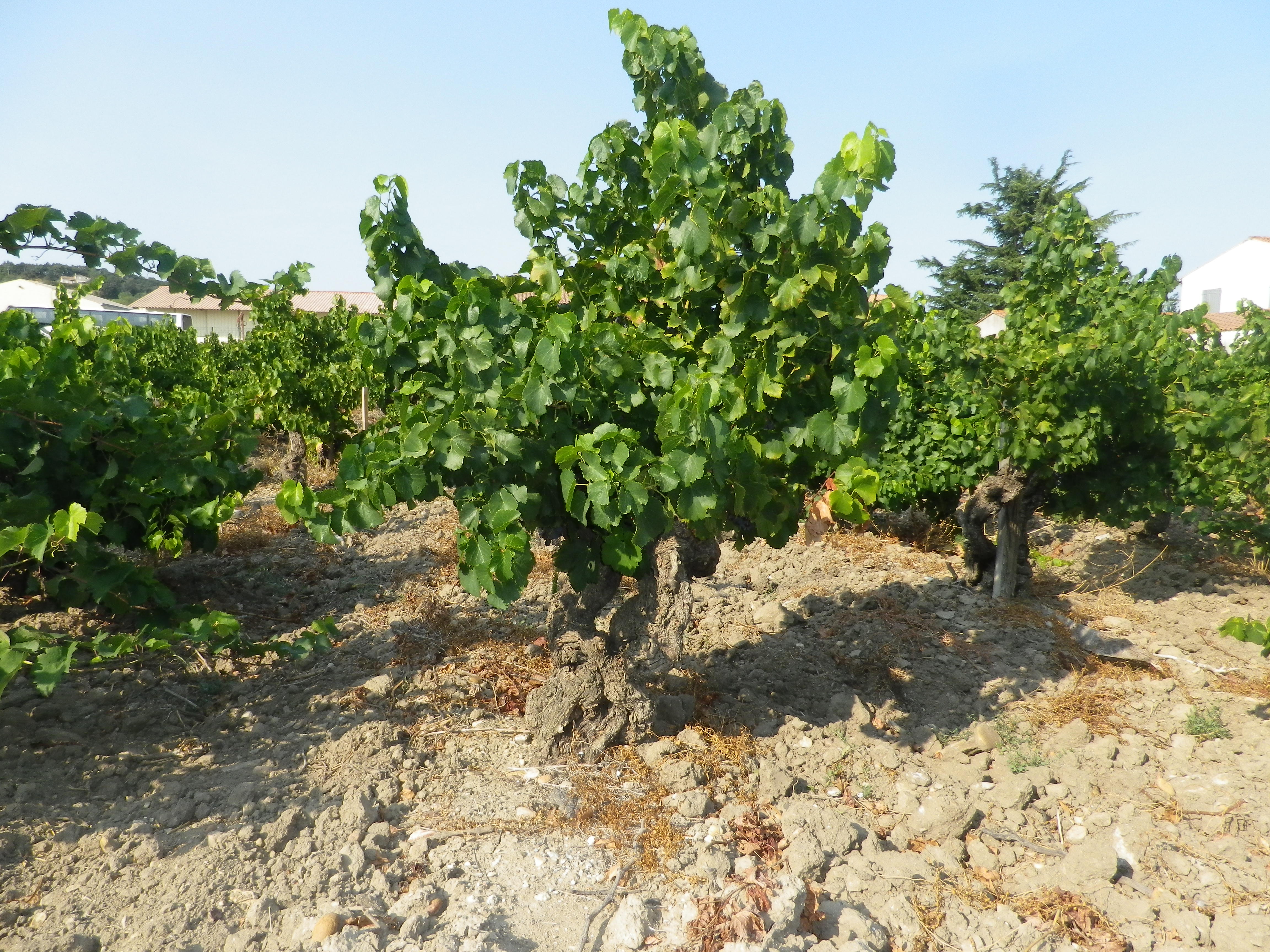
Finally, I noticed that this was an undulating land – more than I had expected or realized at first. With each rise and fall of a slope, around each turn of a vineyard or hedge row, I had a different long distance view. Sometimes Chateauneuf du Pape would disappear from view completely. Other times, I found myself facing the white slopes of Mount Ventoux. Cresting another slope, my old haunts the Alpilles, by Vacqueyras and Gigondas, magically appeared. Yet, I never saw the Rhone River, although the village lies not too far from it.
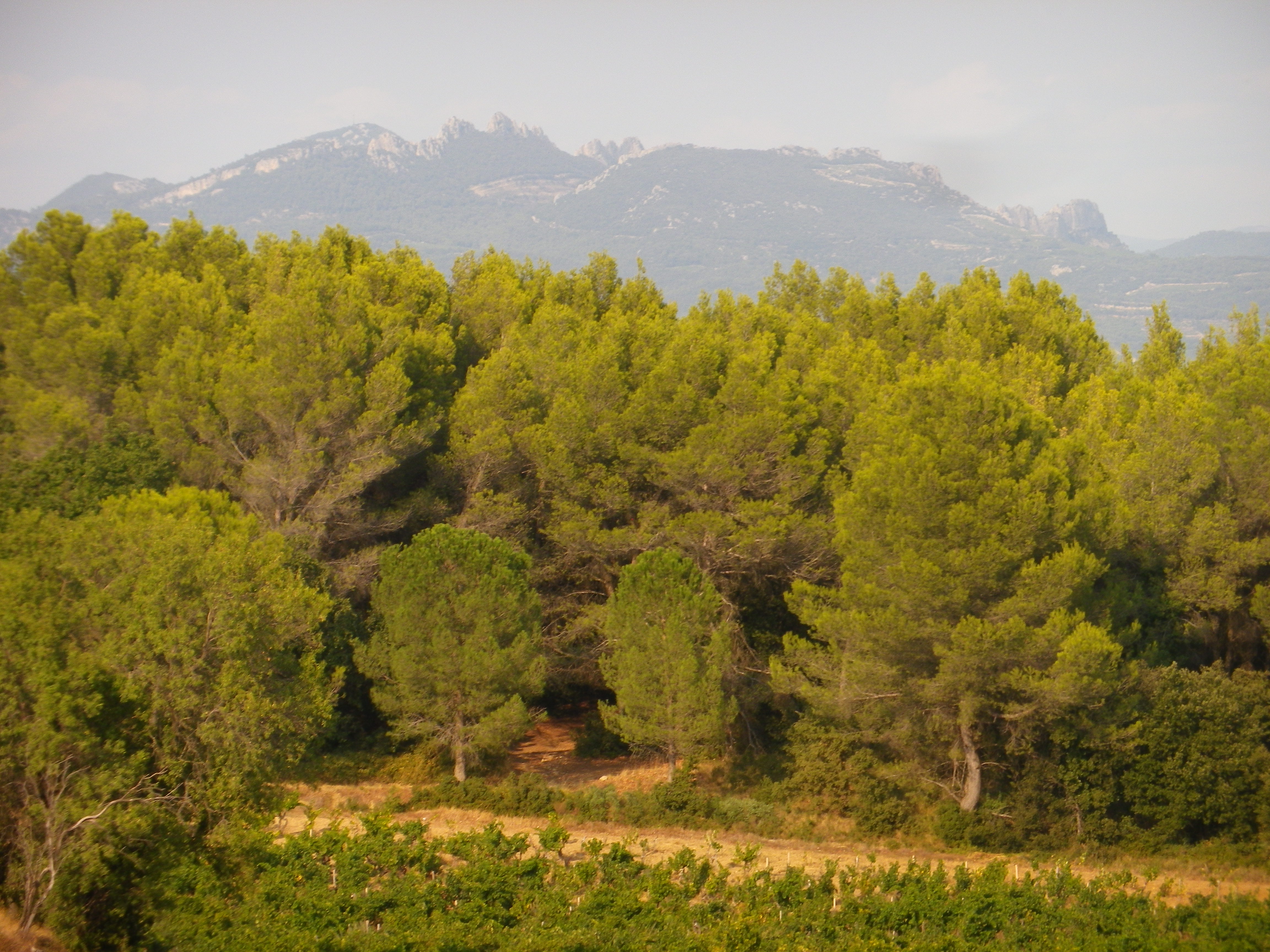
After I passed through the section of vineyards known as the Crau (which means stone in Provencal – per the board), I followed the trail through a wooded section. It provides the only shade for hikers on this itinerary, and is welcome, as it immediately precedes the final section of the trail, a walk along the road back to the starting point on the outskirts of the village
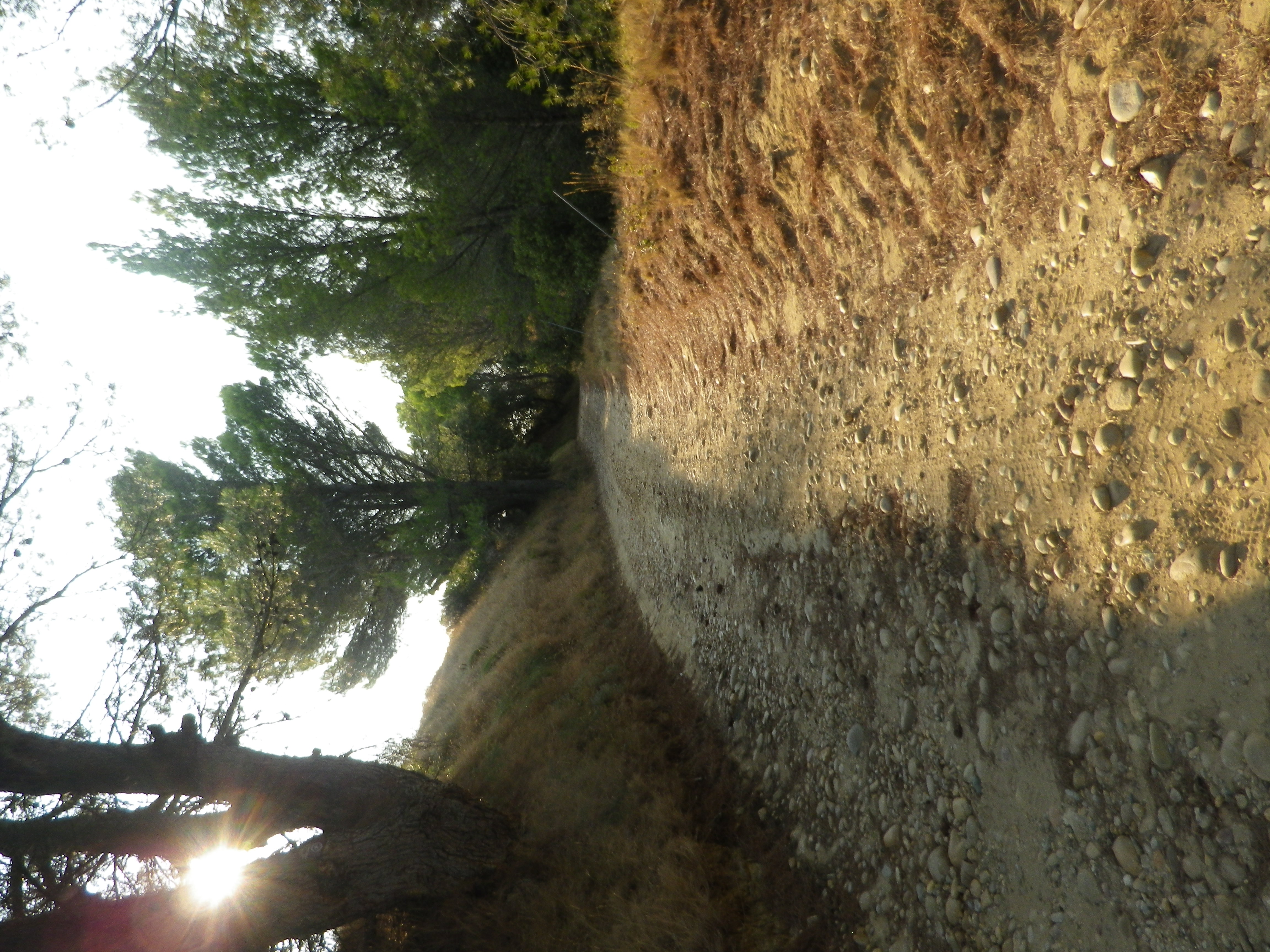
To return to the car, I had to walk back through the village. For such a famous wine, the village was fairly small, (and the tourism infrastructure even smaller). Its castle is a mere ruin, albeit a highly photographed one. Nonetheless, it was exciting to visit the place that may be called the birthplace of the Appellation d’Origine Controlee system, and home to former Popes and famous vineyards. Then, of course, there is the wine – in so many wineries, so many shops – to explore!
Wine Notes: Chateauneuf du Pape
What I Learned
Located in the Southern Rhone wine region of France, Chateauneuf du Pape is one of the world’s most iconic French wines. It has historically been one of France’s most exclusive wines. Since the days of the Popes at Avignon, this wine over time improved, until it became one of the most sought after wines in Europe. Nearby, and even not so near-by wine-makers began to capitalize on its fame, and labelled their own wines “Chateauneuf du Pape.” Indignant Chateauneuf du Pape villagers lobbied the national assembly to pass a law, thus inspiring the Appellation d’Origine Controlee system.
The wines themselves (both red and white) are blends. Traditionally, up to thirteen grapes (both red and white) may be used in the red blend, although most wine-makers rely on fewer than that, and most use at least some Grenache. Other red grape varietals often include another Rhone Valley favorite Syrah, and Southern Rhone stand-ins Mourvedre and Cinsault.
White Chateauneuf du Pape wines are more difficult to find because less than ten percent of the total Chateauneuf du Pape wine production is white wine. No red varietals are allowed in the white wines, leaving the winemakers only six varietals, among them the Grenache Blanc, the Southern Rhone valley perennials Roussanne, Bourboulenc, Clairette and Picpoul.
Chateauneuf du Pape vineyards are also famous for their galets. Rounded stones brought down by the Rhone over eons, they cover the vineyards in many places. Imagine stones akin to Russet potatoes strewn throughout the vineyards! They serve the practical function of reducing weeds, and catching the heat of the sun by day, releasing it at night.
What I Tasted
2015 Le P’tit Plaisir, Vin de France, Domaine Eddie Feraud: A dry white wine cuvee (Grenache, Clairette, Muscat) with medium minus gold color, spice, wood and slight floral nose, with vanilla, floral and slight wood flavors, medium acidity, smooth overall.
2015 Chateauneuf du Pape Blanc, Appellation Chateauneuf du Pape Controlee, Domaine Andre Mathieu: A dry white wine with a medium yellow gold color; mineral and floral nose, along with vanilla and toasted nuts flavors; medium acidity, with a very suave mouth feel and very smooth finish.
2014 Chateauneuf du Pape Rouge, Appellation Chateauneuf du Pape Controlee, Domaine Andre Mathieu: A very dry red wine with dark minus garnet color; tobacco and red cherry nose with herbal and spicy notes, slight leather and cherry flavors, with notes of smoke, and cedar; medium tannins, very dry, with a smooth finish ending on a wisp of smoke.
2013 Chateauneuf du Pape Rouge, Tradition, Appellation Chateauneuf du Pape Controlee, Chateau de la Gardine: A dry red wine with dark garnet color; nose of spice, smoke, stewed plums, with flavors of leather, smoke, stewed red fruits; medium plus tannins, long finish.
2012 Chateauneuf du Pape Rouge, Appellation Chateauneuf du Pape Controlee, Chateau Mont-Redon: A dry red wine with dark garnet color; nose of leather and spice, blackberry, vanilla and oak flavors; medium tannins with a smooth finish.
Escapade au Coeur du Vignoble: Trail in a Nutshell
Trail Name: Escapade au Coeur du Vignoble de Chateauneuf du Pape
Trail Type: an easy short distance circuit; well-maintained and almost about half paved, and half rough, trail surface; marking on the trail is ok, but take a map.
Length:
Total – 7.5 kilometers/4.6 miles
Convenient to:
Avignon or Orange, France
Marking:
Small maroon colored square with the Chateauneuf coat of arms (occasionally), and (15) education boards
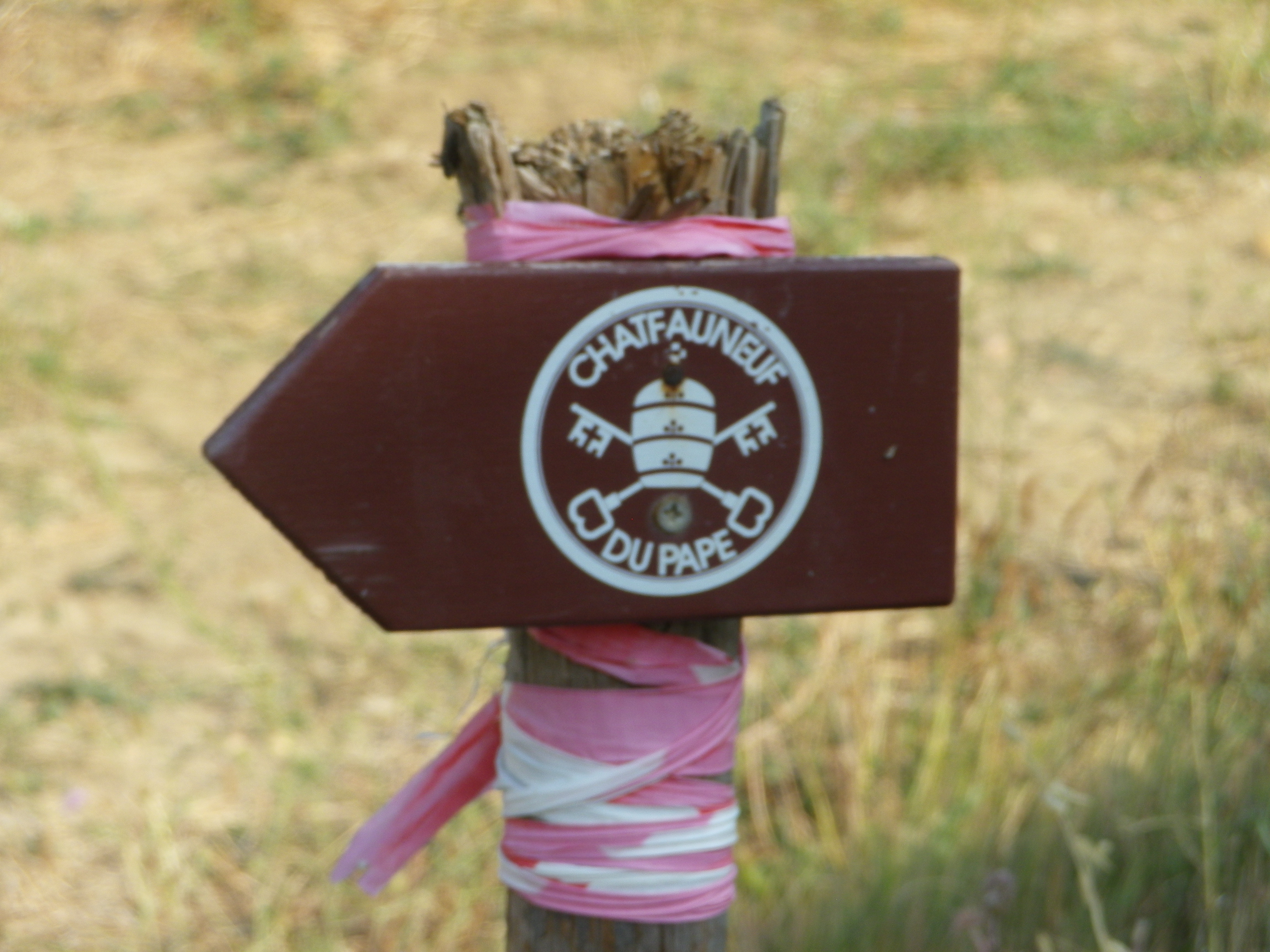
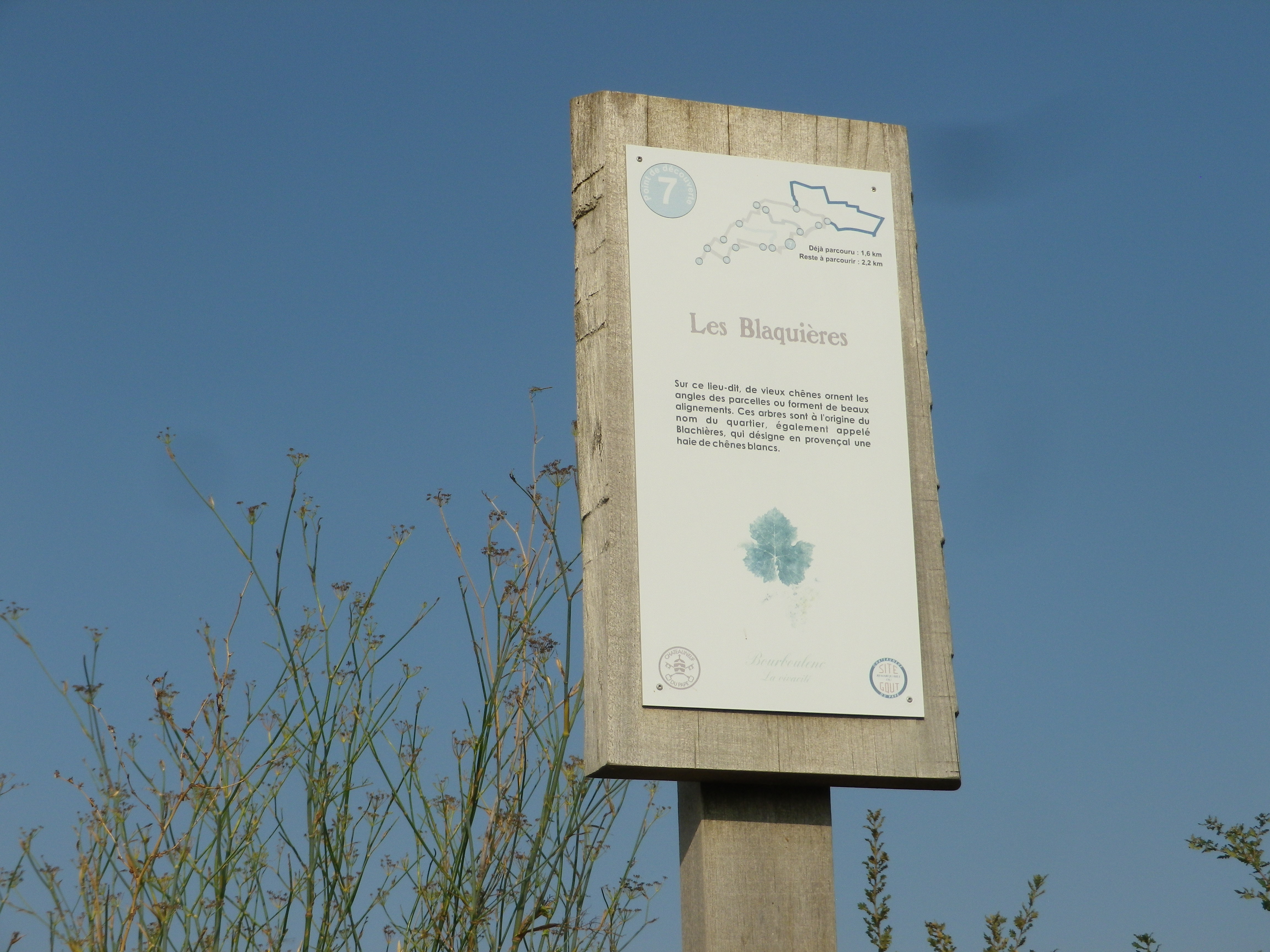
Trail Description:
A pleasant, but mostly unshaded, itinerary through parts of the famous vineyard area of Chateauneuf du Pape, providing great views, tips on local viticultural practices, and fun for the whole family (providing you wear sturdy footwear!).
Trailhead:
Chateauneuf du Pape: Avenue Louis Pasteur
Parking:
In the center of the village, not much, but there is more
Public Transportation Options:
Rail: None, but the closest stations are in Orange, Courthezon or Sorgues, all on the Orange to Avignon line. Check https://www.sncf.com/fr
Bus: Buses on the Route Orange-Sorgues, on Line 922
Suggested Stages:
Not applicable
Trail Itinerary-Reference Points:
Chateauneuf du Pape: Avenue Louis Pasteur-Chemin de la Font du Pape, to the first educative panel, through vineyards to Chemin de la Coste Froide, Chemin de la Montalivet (a narrow track), Chemin de la Nerthe, (turning onto a narrow track called Chemin Draille de la Crau, circling the vineyards of Charbonnieres Est, stair-stepping back west to Chemin de Charbonnieres, onto Route de Courthezon, then right onto a track to rejoin the original trail passing along a small wood, vineyards, then through woods back onto Chemin de la Montalivet; left onto Route de Courthezon/D92, following it back into the village
Representative Trail Photos:
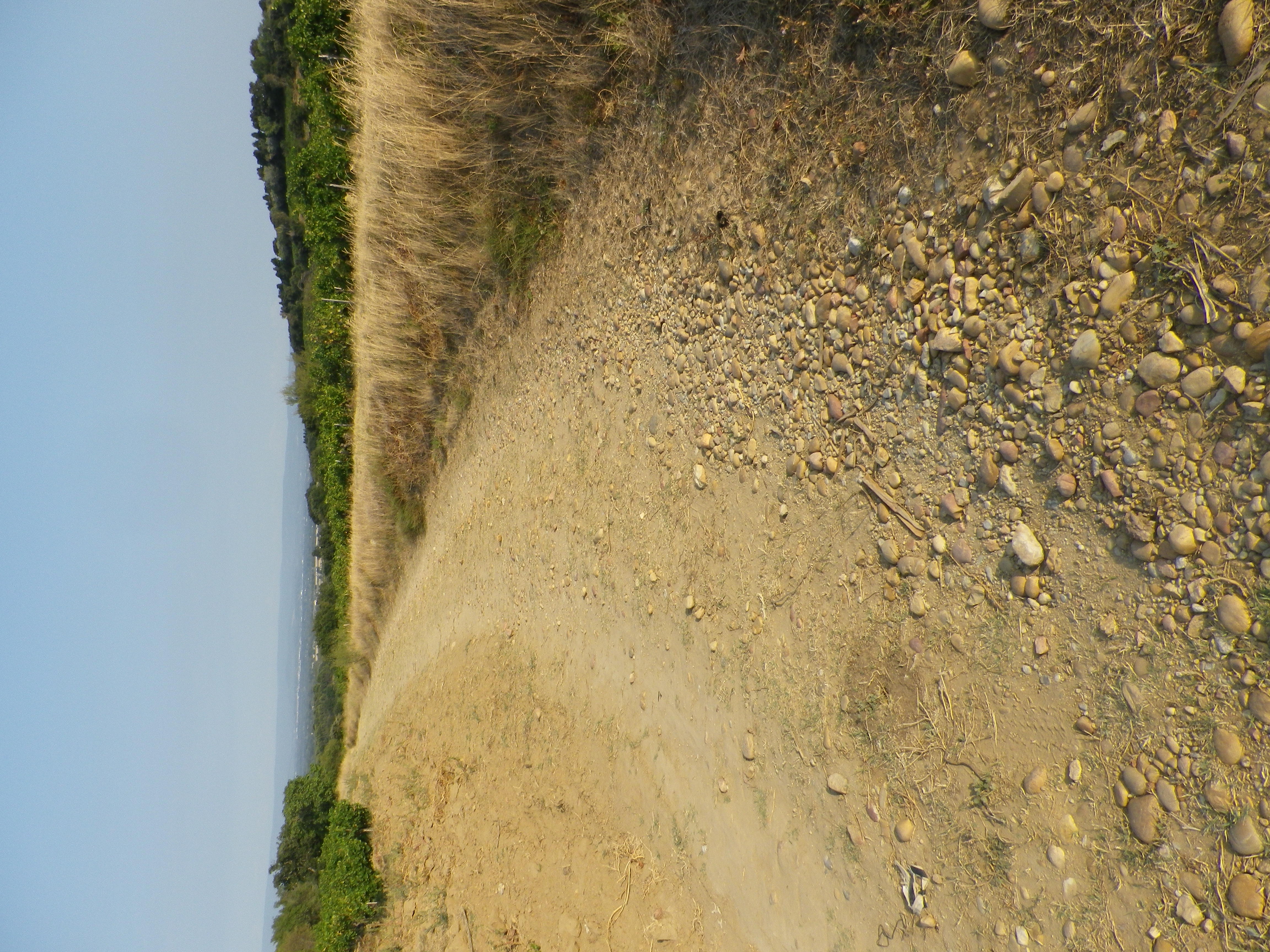
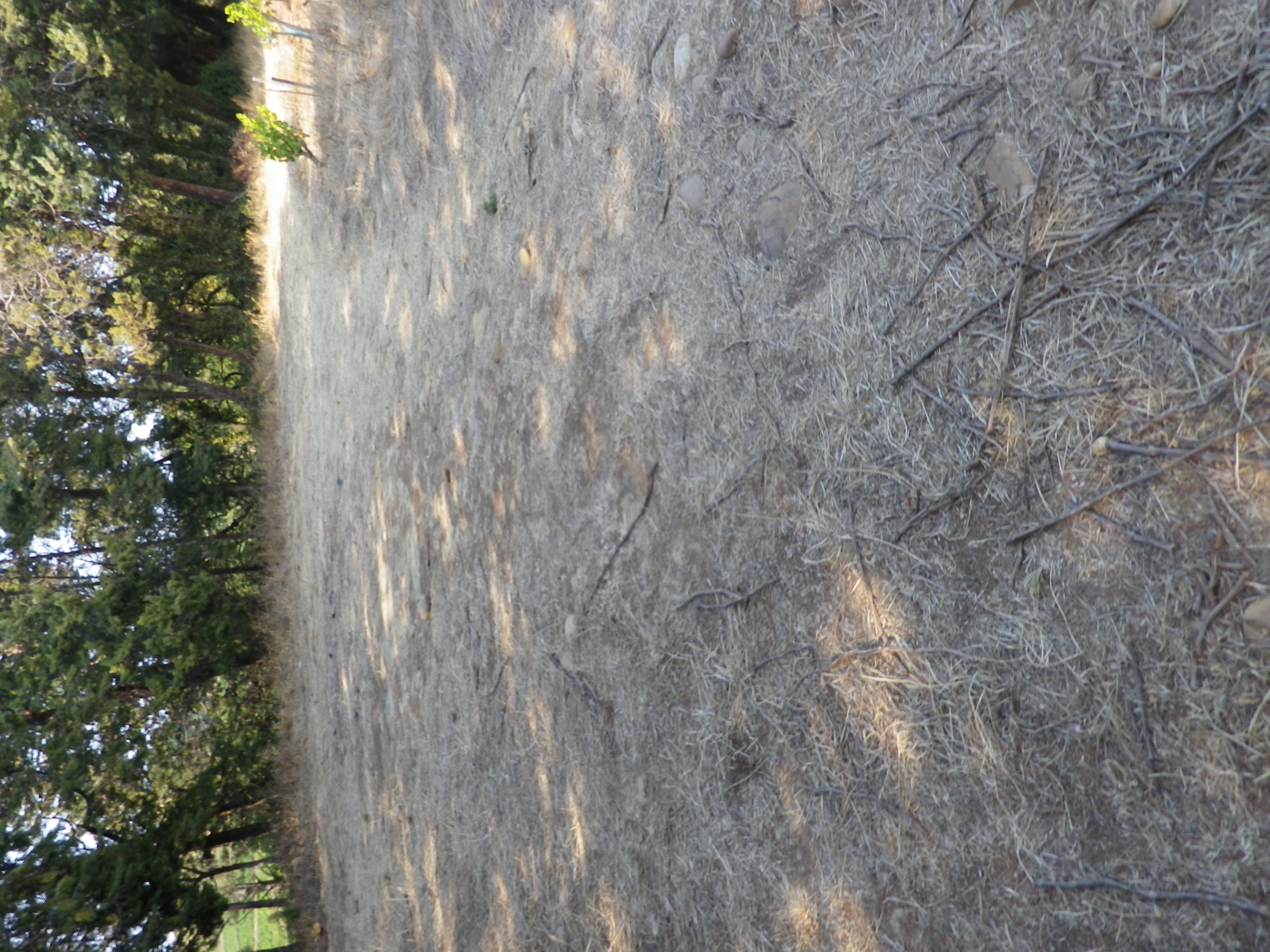
Restrooms:
None observed
Attractions on or near Trail:
Chateauneuf du Pape, Avenue Saint-Pierre de Luxembourg: Musee du Vin Brotte, offers audio-guided tours, and a wine tasting.
Tasting along the Trail:
Both in the village and along the trail there are plenty of wineries to choose from!
Alternative Options:
Hiking: Chateauneuf du Pape and its Environments is a 10.8 km circuit route that has more elevation, and covers a wider variety of scenery, from village to river, as well as through vineyards. See https://www.visorando.com/randonnee-chateauneuf-du-pape-et-son-environnement/
Biking: From the Antique Stones of Orange, to the Galets (River Stones) of Chateauneuf du Pape, a challenging 35 kilometer circuit, beginning in Orange, famous for its Roman theater and other ruins, to Chateauneuf du Pape, some of which follows the well-known Via Rhona bike trail (from Lyon). See https://www.provence-cycling.co.uk/equipment/orange/cycle-route-from-the-stone-to-the-pebbly-terroir/provence-713016-2.html
Additional Information:
Regional: https://www.france-voyage.com/cities-towns/chateauneuf-du-pape-33685/tourist-office-chateauneuf-pape-7166.htm ; and more specifically for this area https://www.poptourisme.fr/
Trail specific: https://www.outdooractive.com/en/route/hiking-route/france/sentier-viticole-chateauneuf-du-pape/266646253/
Comments:
This route leads past 15 numbered education boards about vineyards and winemaking, in order.
The trail is designed with short-cuts (shorter versions), or an extension (longer version) (at or near sign 10, ) to the Charbonnieres Est and the Crau vineyard areas, which adds about 2 km, (1.25 miles) to make it about 7.5 kilometers in total.
